Wrapping Behaviour
Design Through Wrapping Behaviour
Janne Keskinen
Master of Science in Architecture
Aalto University School of Arts, Design and Architecture
2020
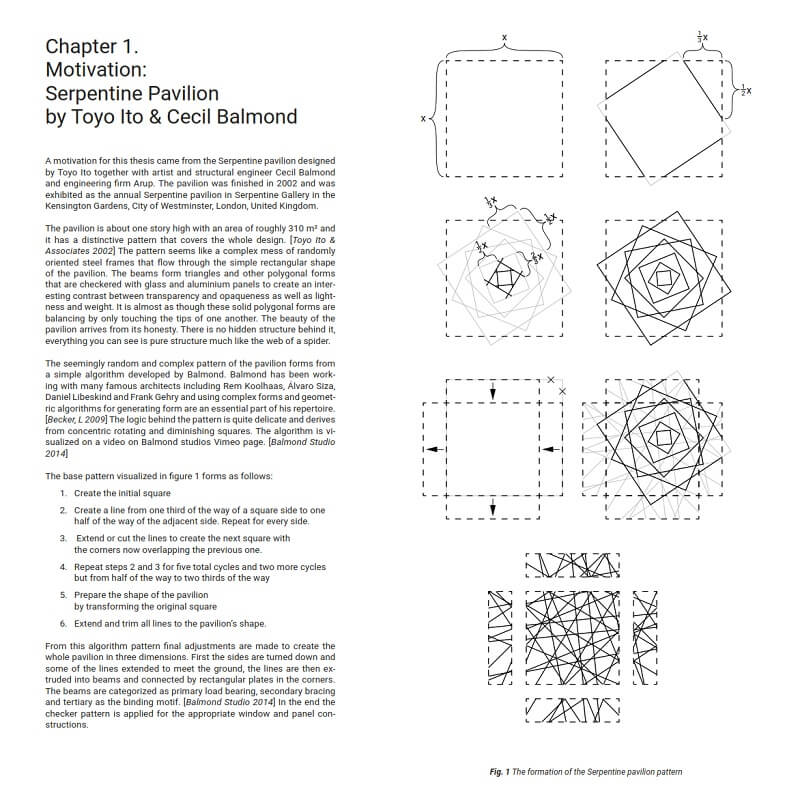
Architects have a magnitude of design approaches with an ever-growing interest towards digital design approaches that harness the power of coding. Through coding architects can break free from premade design tools with their inherent limitations, thus the only limit being the human imagination and physical computing power.
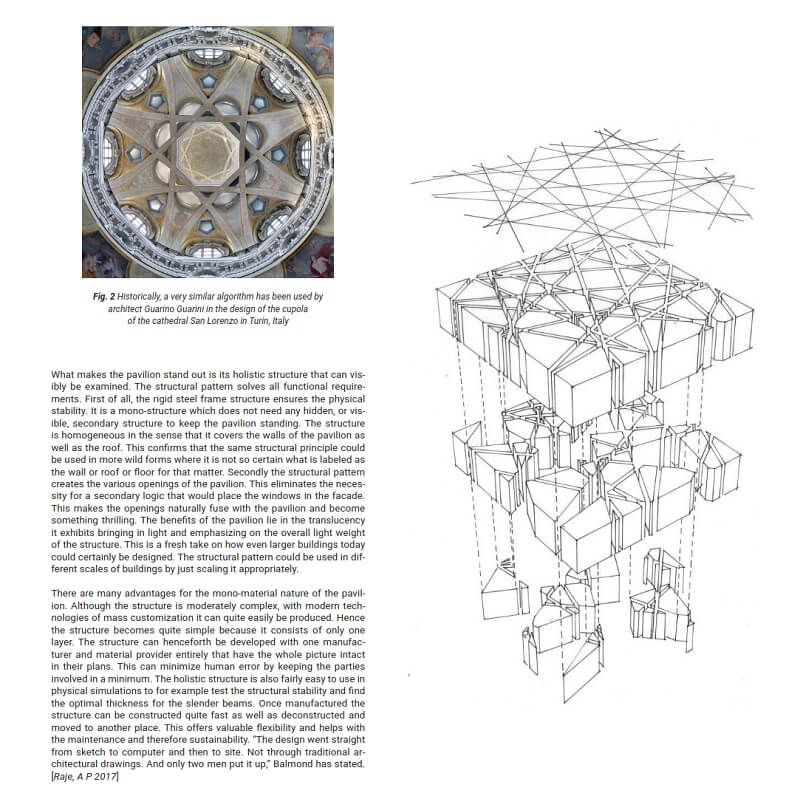 Algorithmic design offers an innovative way of using computational capabilities to create contemporary architectural design. This thesis by Janne Keskinen, presents a textbook example of a digital design approach for architecture through the creation and implementation of an algorithmic design tool.
Algorithmic design offers an innovative way of using computational capabilities to create contemporary architectural design. This thesis by Janne Keskinen, presents a textbook example of a digital design approach for architecture through the creation and implementation of an algorithmic design tool.
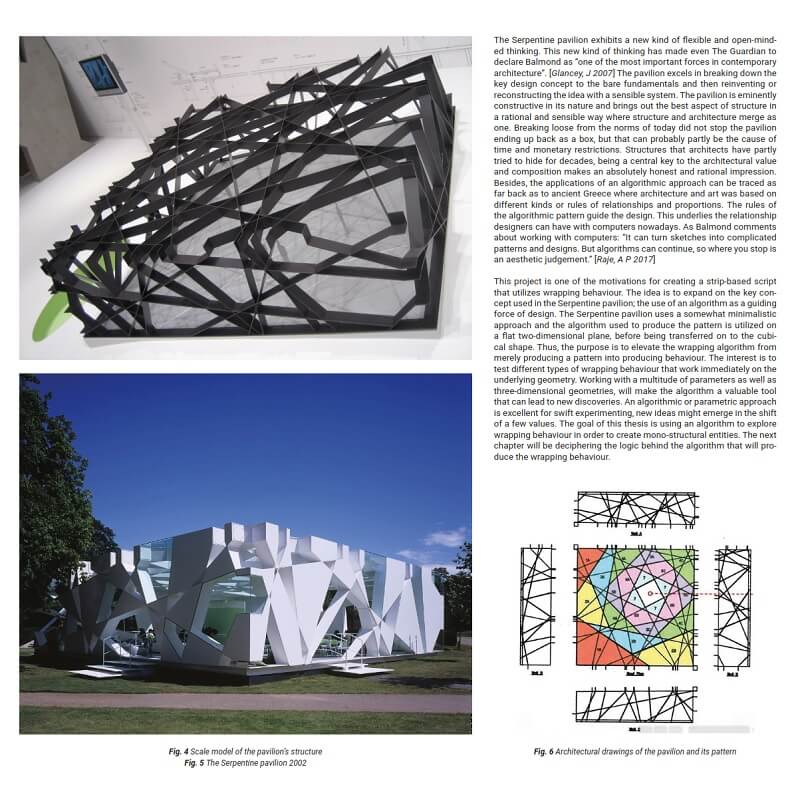 The digital design process utilized in this thesis can be defined as follows: analysis of inspiration and formulation of design concept, creation of digital design tool, analysis and experimentation of the design tool and finally creation of design proposals using the design tool.
The digital design process utilized in this thesis can be defined as follows: analysis of inspiration and formulation of design concept, creation of digital design tool, analysis and experimentation of the design tool and finally creation of design proposals using the design tool.
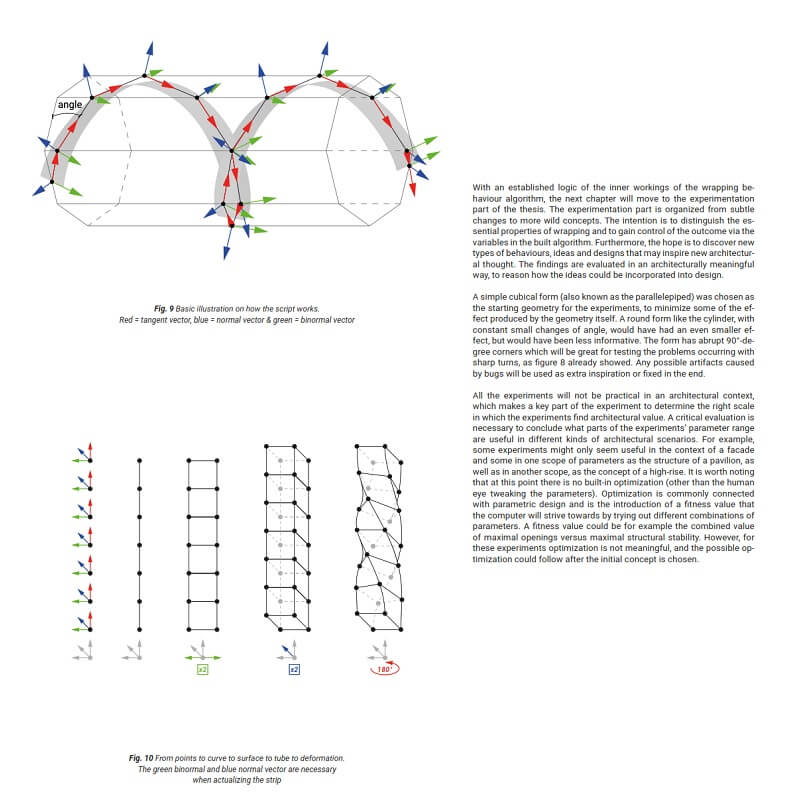 The purpose of this work is to introduce one possible digital design approach in an understandable and clear way. The digital design approach is expressed through illustrations and real-life examples, in hopes to familiarize architects with an algorithmic design approach and its process, as well as with the usage of scripting.
The purpose of this work is to introduce one possible digital design approach in an understandable and clear way. The digital design approach is expressed through illustrations and real-life examples, in hopes to familiarize architects with an algorithmic design approach and its process, as well as with the usage of scripting.
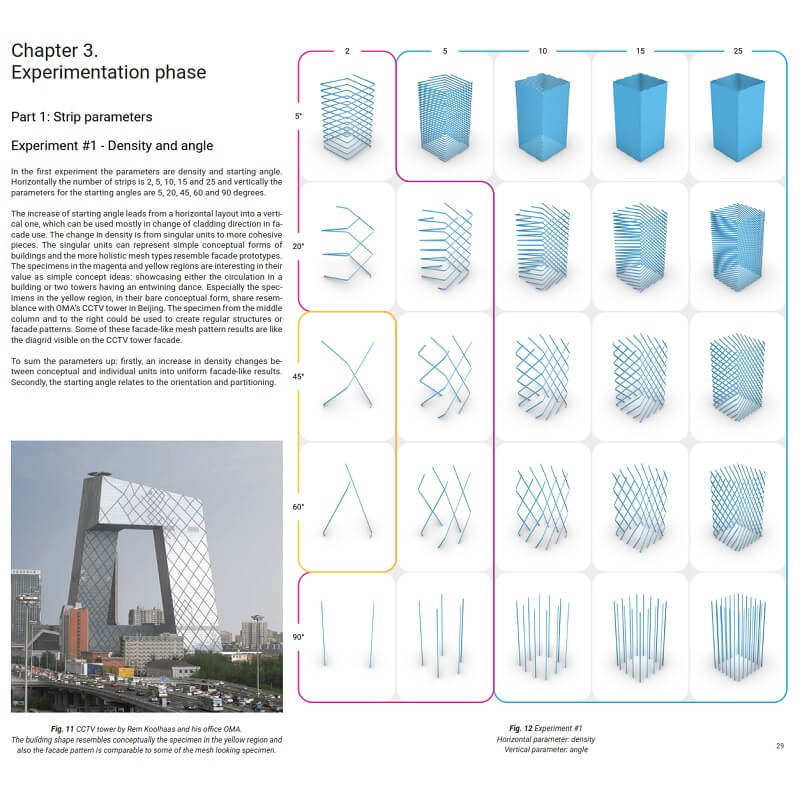 In the meanwhile, this work explores the possibilities of the described algorithmic design approach in architecture through the seemingly simple concept of wrapping behavior. Wrapping behaviour implies the act of wrapping linear strip elements around an object. Through an analysis of the thesis inspiration, the Serpentine Pavilion 2002 by Toyo Ito and Cecil Balmond, the algorithmic rules governing the pavilion are unraveled.
In the meanwhile, this work explores the possibilities of the described algorithmic design approach in architecture through the seemingly simple concept of wrapping behavior. Wrapping behaviour implies the act of wrapping linear strip elements around an object. Through an analysis of the thesis inspiration, the Serpentine Pavilion 2002 by Toyo Ito and Cecil Balmond, the algorithmic rules governing the pavilion are unraveled.
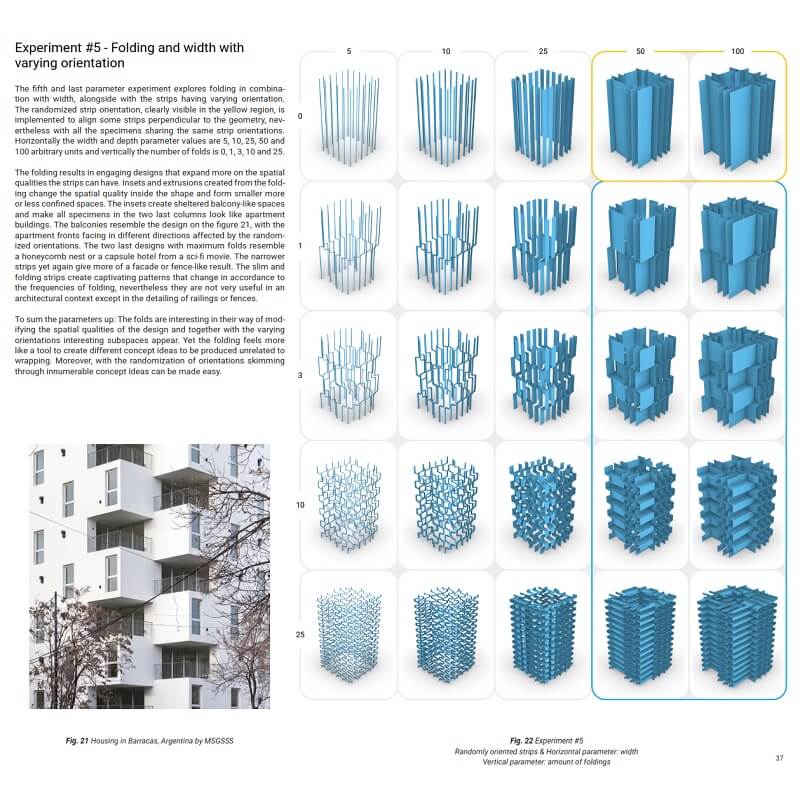 Inspired by the Serpentine pavilion a more versatile digital tool imitating wrapping behaviour is developed, with the same ambition to fuse architectural and structural intent into one holistic design. The creation of the tool is selectively described in chapter two, without going too deep in the technicalities of the Python and Grasshopper code itself.
Inspired by the Serpentine pavilion a more versatile digital tool imitating wrapping behaviour is developed, with the same ambition to fuse architectural and structural intent into one holistic design. The creation of the tool is selectively described in chapter two, without going too deep in the technicalities of the Python and Grasshopper code itself.
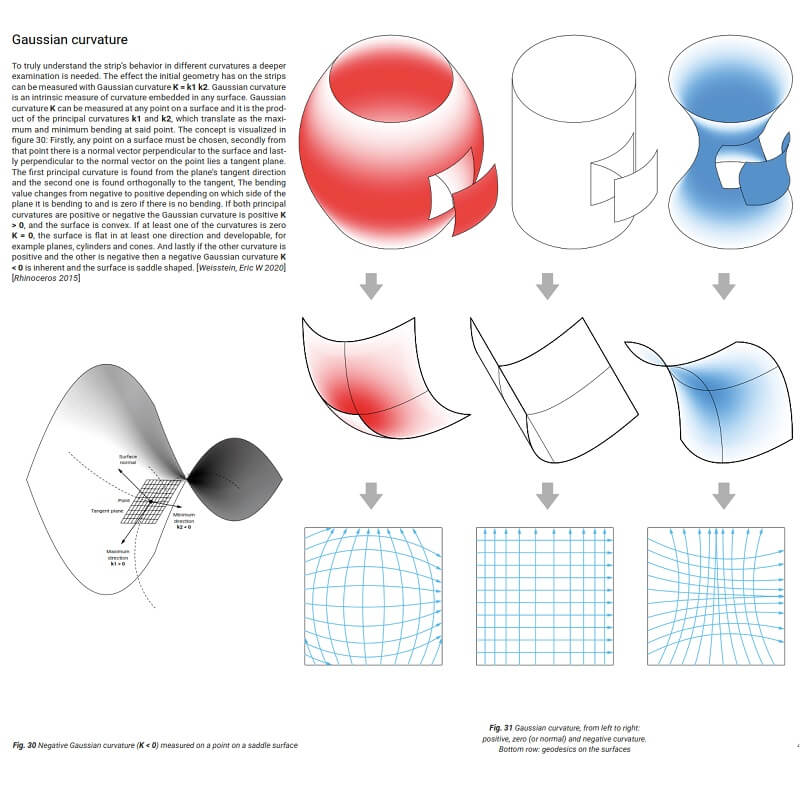 After a series of experiments and explorations with the algorithmic tool, an understanding of the wrapping behaviour is visualized and finally put into architectural design use through three speculative design proposals. The three design proposals highlight three possible scenarios of properties, scales and functionalities. The proposals, hence, successfully address the versatility of the digital design process.
After a series of experiments and explorations with the algorithmic tool, an understanding of the wrapping behaviour is visualized and finally put into architectural design use through three speculative design proposals. The three design proposals highlight three possible scenarios of properties, scales and functionalities. The proposals, hence, successfully address the versatility of the digital design process.
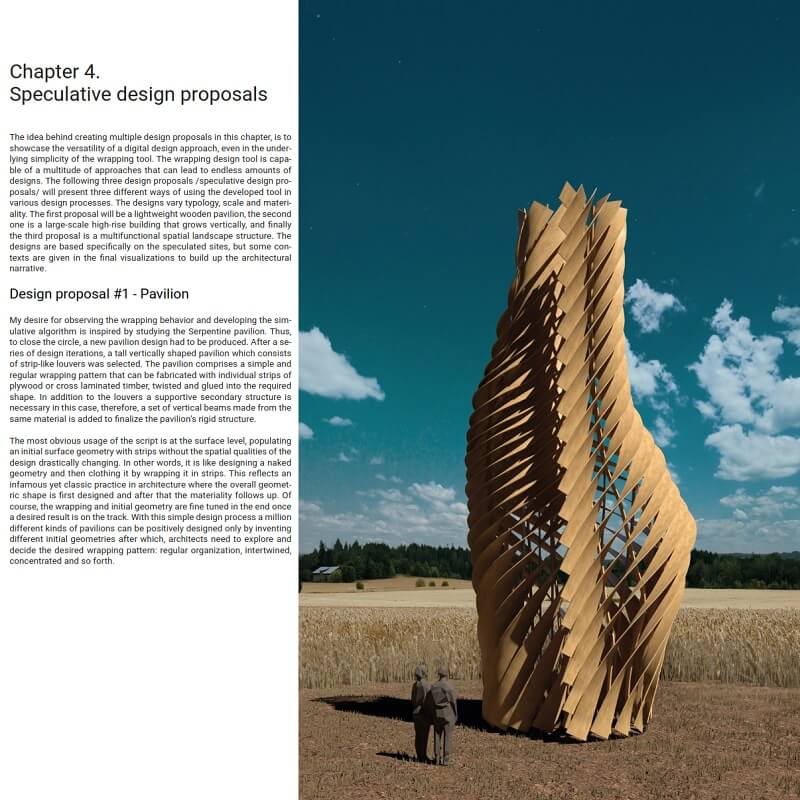 This thesis work proves how even a simple concept such as wrapping behaviour can be turned into a digital tool capable of relevant architectural design. This thesis work can hopefully inspire future digital design works in architecture by laying down a path to future research, by presenting a solid roadmap to a successful digital and algorithmic design process.
This thesis work proves how even a simple concept such as wrapping behaviour can be turned into a digital tool capable of relevant architectural design. This thesis work can hopefully inspire future digital design works in architecture by laying down a path to future research, by presenting a solid roadmap to a successful digital and algorithmic design process.
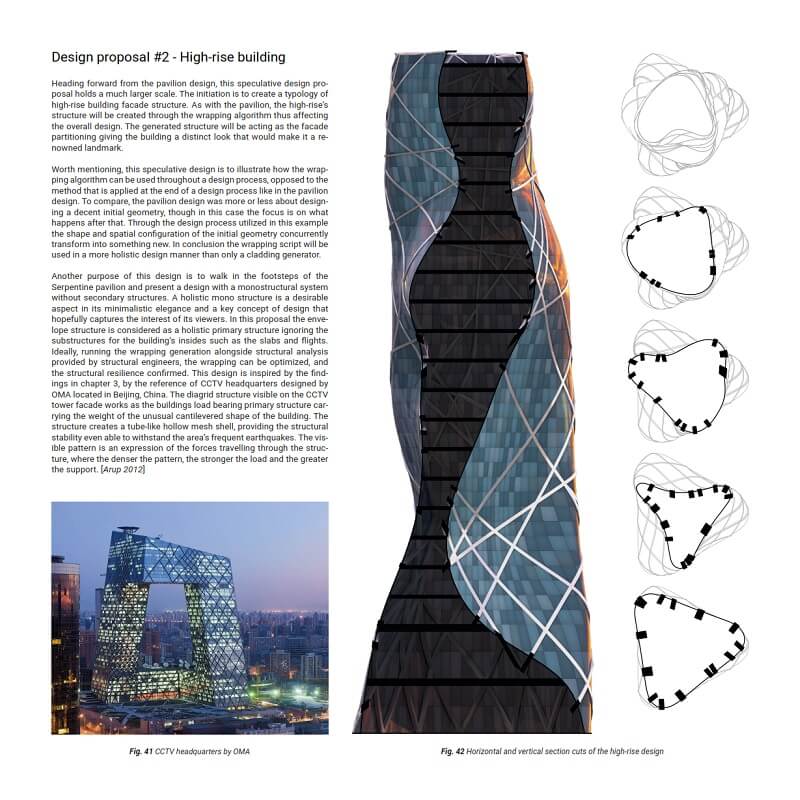 The topic of wrapping behaviour is open for further research, through further development of the wrapping script or through ideas branching from the main concept of wrapping behaviour.
The topic of wrapping behaviour is open for further research, through further development of the wrapping script or through ideas branching from the main concept of wrapping behaviour.
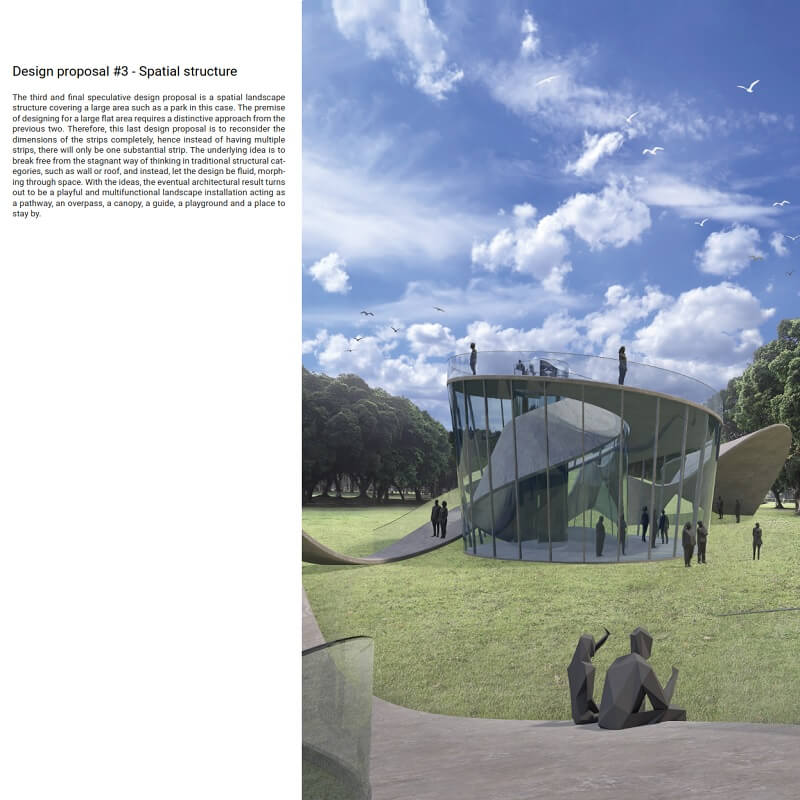




























Comments